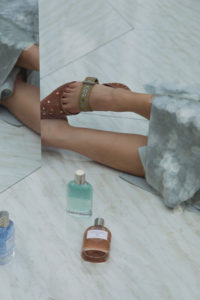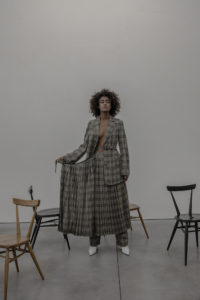There’s something inherently ‘meta’ about the nature of slowness. As its nature, the phenomenon of ‘slowness’ came into being by gradually seeping through, making a quiet entrance without so much as a whisper. Instead of radical reform bursting at the seams and taking multiple schools of thought by storm, such as the emergence of Realism following the French Revolution (or Cardi B’s tumultuous explosion in pop culture) (where actually was she manufactured and what is the expiry date?), slow art softly faded in (like Taylor Swift’s -‘organic’, as we like to say in the industry – emergence pre-Kanye West), introducing alternative ways to enrich the act of looking.
Hints of slowness in an autonomous culture have been popping up in various cultural forms: slow history, slow money, slow travel and even slow sex.
But have we really slowed down since the Industrial Revolution and the rise of technology? Especially now, in an age of instant gratification and dopamine abuse, in which patience, craftsmanship and delay are exchanged for immediate fulfilment?
In matters of literature, the technique of exhausting narration and minimising action are literary tropes that initiate a readerly lethargy; details upon details about ‘stuff’ or ‘objects’ become tiresome to read. But purposefully!: Flaubert’s excess descriptions in Madame Bovary exist to enhance the protagonist’s boredom and irritation. Naturally, we readers form a relationship with Bovary—her boredom becomes our boredom, and we too become excited by the oscillation of her she navigates with other men.

On a literal – pun definitely intended – sense, certain writers and artists from the Romantic period would even resort to opium in order to slow down and experience euphoria. This isn’t to say that they were our OG stoners, high on opium to inspire verse—at least not initially. Imagination was of particular importance to the Romantics, and the euphoric experience of opium enabled these poets and painters to expand their minds. This sense of euphoria is a reminder of the pleasure that can be achieved from slowing down, and also hints at slow sex and notions of heightened pleasure. As a Coleridge started taking opium in its medicinal form for his knees and got carried away. His ‘opium’ poem Kubla Khan is riddled with implicit fantasies and the occasional erotic reveries. YUP.
Expression through Slow Art is similarly about a relationship that exists between the observer and the object, and results in a meaningful encounter. The American author Arden Reed explains in his book Slow Art: The Experience of Looking what happens when you look at a painting for a short instant or a much longer period of time, using the painting Young Lady in 1866 by Édouard Manet as a prime example of his personal slow experience. For an entire eight-year period, Reed picked this painting apart, reading into each singular item surrounding and worn by the young lady—from the luscious folds of her robe to the man’s monocle she has clasped in her hand. He refers to this encounter of looking as a “collaboration.”
At first, Mark Rothko’s Orange and Yellow (1956) painting appears to be a simple camaraderie of two colours. He applied numerous layers of thin paint to the canvas, which soaked into the fabric. The painting is at once bold and peaceful, revealing new shapes and new shades of the original colours. These new shapes hint at the slow experience of looking, forming a collaboration between the oeuvre and the onlooker.

Meaningful encounters are equally important in film, specifically Contemplative Cinema. Expression in both Slow Art and Slow Cinema rely on the observer’s capacity to look, contemplate and linger. In these experimental films, however, the observer is encouraged to drift off and psychologically step outside and into an alternative space in which the film can be pondered from a distance “to think about and fill in aspects of plot, space, time and character deliberately left unclear by the filmmaker.” (Jaffe, 2014: 46)
Andy Warhol’s multi-hour movies where nothing happens are often cited for their slow moving and silent attributes. Sleep (1963), which premiered at the Gramercy Arts Theatre, lasts five hours and 21 minutes and consists entirely of a man sleeping. Warhol’s use of duplication and ultra-long shots rails against the norms of Hollywood speed, urging the spectator to find pleasure in their freedom to linger.

The focus on contemplation comes from a minimalism in relation to cinematic techniques: a slow cutting rate, less camera movement and a general tendency towards long(er) shots over close-ups, as opposed to the constant variation between long shots and close-ups so typical of conventional mainstream cinema (Jaffe: 2014: 4). Lav Diaz’s Melancholia embodies the physical stillness, emptiness and silence so prominent in Slow Cinema, with some shots lasting as long as three minutes. As they say, patience is a virtue.
Fashion, on the other hand, depends on constant and perpetual movement. There’s a much stronger focus on ‘the now’, causing the fashionable to be in a state of constant flux and transition. As Anja Aronowsky Cronberg laments in Issue Five of Vestoj, the depreciation of the present in matters of fashion “is what keeps the wheels of the system turning.”
However, Fashion’s dependency on acceleration means that the process of getting ready is seen as an activity that should take very little time. In the 18th and 19th centuries, more thought was put into dressing, which was made up of several different stages of preparation, and the bourgeois societies were expected to change clothes at least once a day.

Contemporary Slow Fashion harks back to these notions of contemplative dressing, but in terms of production rather than the actual act of getting dressed. Just one pair of Faustine Steinmetz’s reconstructed artisanal jeans takes 45 hours and three pairs of recycled jeans to weave – with a lot less waste involved.
Bausch’s soft movements juxtapose the precision of classical ballet and transition effortlessly from one level to the next, causing her entire form to move like magma. This particular choreography exudes a vulnerability and sensuality that feels entirely different to her Sacrificial Dance from Rite of Spring (3:34). In this routine, Bausch violently hurls herself across the stage and becomes stiffened, sharp and ecstatic. Such distinction serves to enhance the subtle pleasures of slowing down, which enables the body to morph, transform and sweep freely.
In matters of expression, slowness is multifaceted and serves to bring out the best in various art forms. It has become a tool for the onlooker who unlocks their own interpretation and discovers, with a bit of extra hard work, the unseen textures in a painting at first glance. It may take a little longer to plough through chunks of large text (to get to the damn point), but isn’t it great to discover these smaller details? Isn’t it more pleasurable to wait and see?
And, in matters of ‘stuff’, can slowness save the planet? Food for thought.



Comments